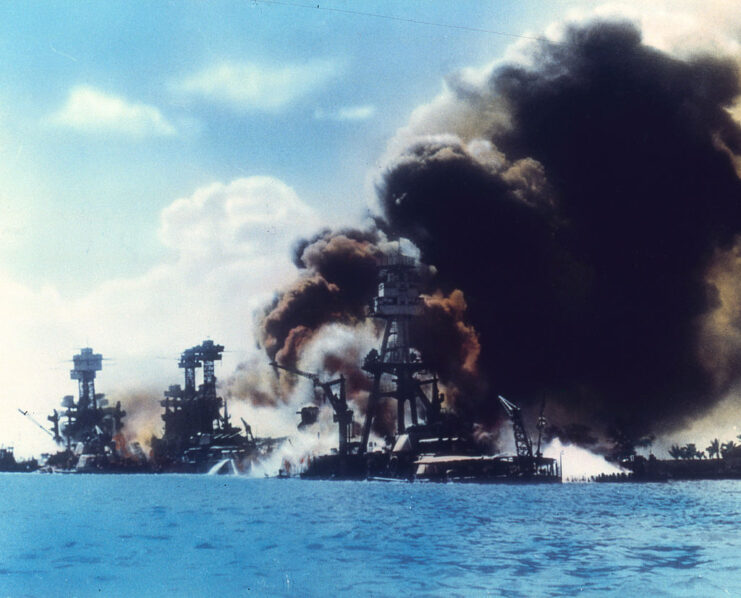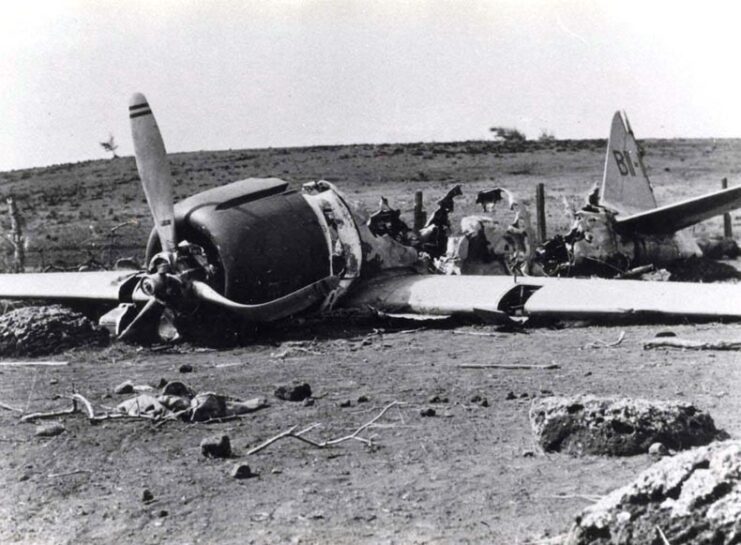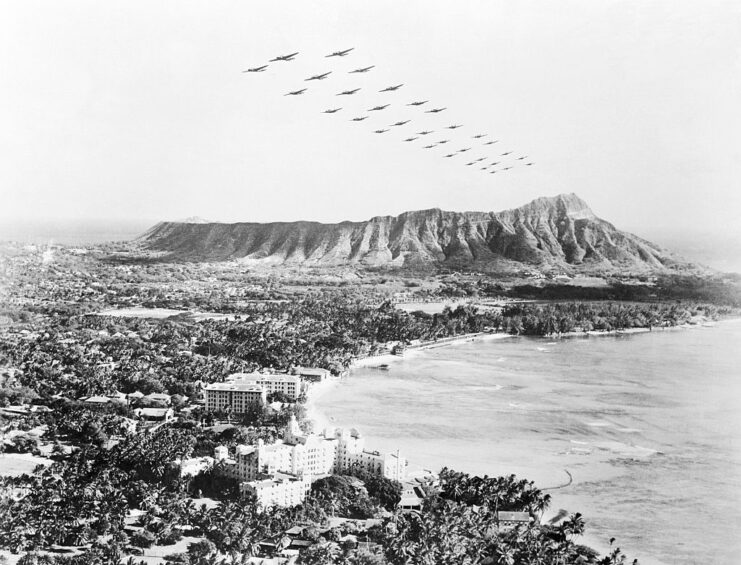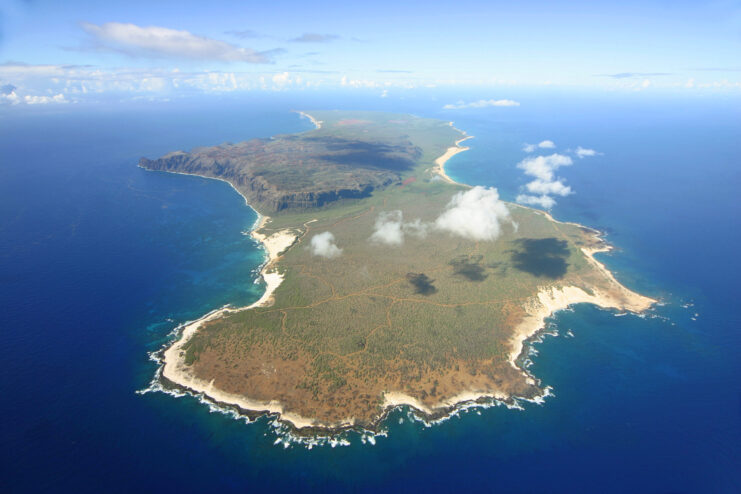Shigenori Nishikaichi crash-lands on Ni’ihau

The attack on Pearl Harbor was meticulously planned by the Imperial Japanese Navy (IJN), with one key detail being the preparation for the eventual loss of many aircraft. Knowing that their planes wouldn’t be able to return to the carriers, the Japanese chose Ni‘ihau, a small, and believed to be uninhabited, Hawaiian island, as a potential rendezvous point for their pilots. From there, the pilots could await rescue by submarine, assuming the mission went as planned.
However, Shigenori Nishikaichi’s situation didn’t follow the script. After his Mitsubishi A6M2 Zero sustained damage, he struggled to make it to Ni‘ihau. The aircraft crashed upon landing, striking a fence and damaging its fuselage and propellers. The wreckage came to a halt near one of the island’s few residents, 29-year-old Hawila Kaleohano.
At the time, Kaleohano, along with others on the island, had no knowledge of the Pearl Harbor attack. When he found the crashed Zero and its Japanese pilot, he was able to drag Nishikaichi out of the wreckage, taking the pilot’s weapon and documents before Nishikaichi regained full consciousness.
Interacting with Ni’ihau’s inhabitants

Hawila Kaleohano and Shigenori Nishikaichi managed only a brief conversation, as Kaleohano spoke exclusively Hawaiian. To overcome the language barrier, he enlisted the help of his neighbor, Ishimatsu Shintani, a Japanese-born beekeeper. Shintani was able to talk with Nishikaichi initially but soon opted out of continuing as an interpreter.
Afterward, Yoshio and Irene Harada, a local couple of Japanese descent fluent in the language, were called in. During their exchange, Nishikaichi disclosed information about Japan’s surprise attack on Pearl Harbor. The Haradas, however, decided to withhold this intelligence. When Nishikaichi demanded the return of his weapon and official papers, the couple refused to comply.
Learning about the Japanese attack on Pearl Harbor

Initially, the people of Ni‘ihau welcomed the downed Japanese pilot warmly. Believing he would soon be rescued, they treated him as a guest—hosting a festive luau, offering food, and singing songs. But the submarines assigned to retrieve him were redirected to pursue U.S. naval targets, leaving him unexpectedly marooned on the island.
That night, everything changed. Though Ni‘ihau didn’t have electricity, a single battery-powered radio brought news of the attack. Residents realized the man they had just celebrated was one of the attackers from the bombing of Pearl Harbor. The revelation sent shockwaves through the close-knit community.
Unsure of the proper course of action, the islanders chose to keep Nishikaichi under watch, offering him temporary shelter until Aylmer Robinson—the island’s absentee landowner—could arrive by boat, as he routinely did. But with wartime travel frozen, Robinson never came.
With few options, the villagers agreed to let the Haradas, a local couple, take the pilot into their home. Though hesitant, the community insisted on keeping him under constant guard, stationing watchmen at the house day and night to prevent any escape or violence.
Shigenori Nishikaichi took advantage of the Harada family

Cut off from the outside world, Shigenori Nishikaichi skillfully exploited the Haradas’ sense of duty and cultural connection, gradually winning over Yoshio and, to a lesser degree, his wife. On December 11, 1941, the couple decided to once again draw Ishimatsu Shintani into the situation.
The next day, Shintani confronted Hawila Kaleohano, demanding that he surrender the downed pilot’s documents and firearm. When Kaleohano stood his ground, Shintani was physically forced out of the hut. Recognizing that Shintani couldn’t be trusted to help, Yoshio and Nishikaichi began plotting their next move.
While Shintani was occupied with Kaleohano, Yoshio managed to steal a shotgun and a pistol, concealing both inside a warehouse used for storing honey. Armed and determined, he and Nishikaichi subdued the islander guarding the area and made their way to Kaleohano’s home. They broke in and searched frantically for the papers, only to learn that Kaleohano had already passed them to a relative—and vanished before they could catch him.
Seeking help from the island’s owners

As the pair left the building, Hawila Kaleohano, who’d been hiding in the outhouse, made a run for it. Shigenori Nishikaichi took aim with the shotgun and fired at the fleeing man, but missed.
Kaleohano met with other islanders and gathered a few of them to accompany him to Kaua’i. The 10-hour boat trip took them to representatives of the island’s owners. The group set out while someone lit a beacon atop Mount Pānī’au, which was visible from Kaua’i.
Chaos ensues on Ni’ihau

On the night of December 12, 1941, everything came to a head. Shigenori Nishikaichi and Yoshio Harada stormed the town and took hostages. They demanded Hawila Kaleohano be handed over or else everyone would be killed.
One man who pretended to look for Kaleohano was Benehakaka Kanahele, whose wife was one of the hostages. After stalling and pretending to look for the man, he urged Harada to take the pilot’s pistol. He refused, but did ask Nishikaichi for the shotgun.
As the aviator started to hand the gun over, Kanahele lunged at him. Nishikaichi was faster and pulled the pistol from his boot, shooting the man three times. This wasn’t enough to stop the enraged Kanahele, who hoisted Nishikaichi into the air and threw him against a stone wall. Kanahele’s wife grabbed a rock and bashed the pilot’s head, before her husband pulled a knife and cut his throat. Seeing this, Harada turned the shotgun on himself and took his own life.
Aylmer Robinson and reinforcements from Kaua’i arrived the next day and arrested Ishimatsu Shintani and Irene Harada. The latter was imprisoned for her role, while the former was interned in a camp.
More from us: Husband E. Kimmel: The Scapegoat for Pearl Harbor
Kanahele recovered from his wounds and received the Purple Heart, two Presidential Citations and Medal for Merit. Kaleohano was presented the Medal of Freedom in 1946, for his actions during the incident.
